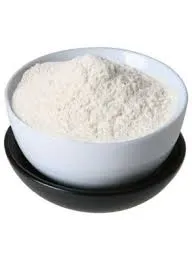
ก.ค. . 30, 2024 05:18 Back to list
Properties and Applications of Redispersible Polymer Powders in Construction and Coatings Industry
Understanding Redispersible Polymer Powder and Its Applications
Redispersible polymer powders (RDP) are a form of dry polymer that can be redispersed in water. They are typically produced by spray drying aqueous polymer dispersions. This process preserves the polymer's properties while allowing it to be stored and transported in a dry form, making it very convenient for various applications, especially in construction and building materials.
RDPs have gained significant traction due to their versatility and performance-enhancing characteristics. They are primarily used as additives in cement-based products, such as tile adhesives, plasters, and mortar. When these powders are mixed with water, they rehydrate and form a stable polymer dispersion, which enhances the performance of the host material. The addition of RDP improves adhesion, flexibility, and workability while also contributing to water resistance and elongation properties of the final product.
One of the most significant advantages of redispersible polymer powders is their capability to enhance the mechanical properties of construction materials. For instance, when integrated into cementitious systems, they can help reduce the brittleness of the materials. This results in a more flexible final product capable of absorbing stresses without cracking. Moreover, RDPs improve the thin-layer application properties of mortars and adhesives, facilitating easier application and better aesthetics.
Another area where redispersible polymer powders shine is in the formulation of external insulation and finish systems (EIFS). These polymer powders help produce thin-layer systems that are lightweight yet provide excellent thermal insulation. The use of RDP in these formulations ensures that the coatings adhere properly to different substrates, resist adverse weather conditions, and maintain structural integrity over time.
redispersible polymer powder wikipedia

The construction industry is not the only sector benefiting from RDPs. The paint and coatings industry also utilizes these polymer powders as a binder to improve the performance characteristics of paints. When used in emulsion paints, RDPs improve adhesion, flexibility, and water resistance. This results in longer-lasting finishes that can withstand the elements, making them ideal for both interior and exterior applications.
Environmental considerations are increasingly influencing the formulation of materials, and RDPs play a role in producing greener construction solutions. Many redispersible polymer powders are made from renewable resources and can reduce the carbon footprint of construction activities. Additionally, RDPs can enhance the mechanical properties of products, potentially reducing the amount of material needed without compromising performance.
While redispersible polymer powders offer numerous advantages, it is essential to understand that their performance is highly dependent on various factors, including the type of polymer used, the presence of additives, and the formulation of the end product. Therefore, it is crucial to tailor the use of RDPs to specific applications to maximize their benefits.
In conclusion, redispersible polymer powders represent a critical innovation in materials science, particularly within the construction and coatings industries. Their ability to enhance the performance of cementitious products and paints makes them invaluable. As industries continue to prioritize sustainable practices, RDPs are likely to play an increasingly prominent role in the development of eco-friendly materials. With ongoing research and advancements in polymer technology, the applications and benefits of redispersible polymer powders are poised to expand further, offering promising solutions for a variety of industrial challenges.
-
The Widespread Application of Redispersible Powder in Construction and Building Materials
NewsMay.16,2025
-
The Widespread Application of Hpmc in the Detergent Industry
NewsMay.16,2025
-
The Main Applications of Hydroxyethyl Cellulose in Paints and Coatings
NewsMay.16,2025
-
Mortar Bonding Agent: the Key to Enhancing the Adhesion Between New and Old Mortar Layers and Between Mortar and Different Substrates
NewsMay.16,2025
-
HPMC: Application as a thickener and excipient
NewsMay.16,2025
-
Hec Cellulose Cellulose: Multi functional dispersants and high-efficiency thickeners
NewsMay.16,2025







